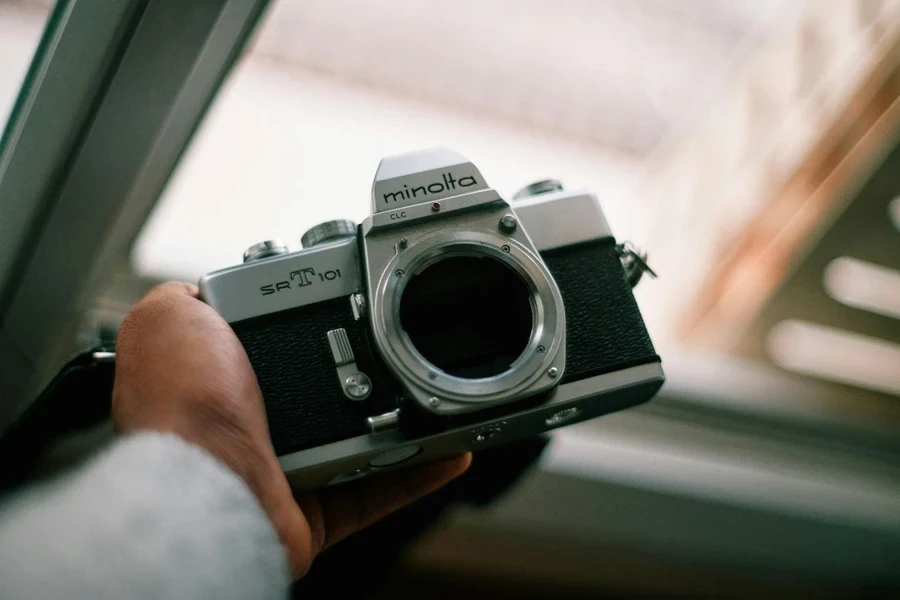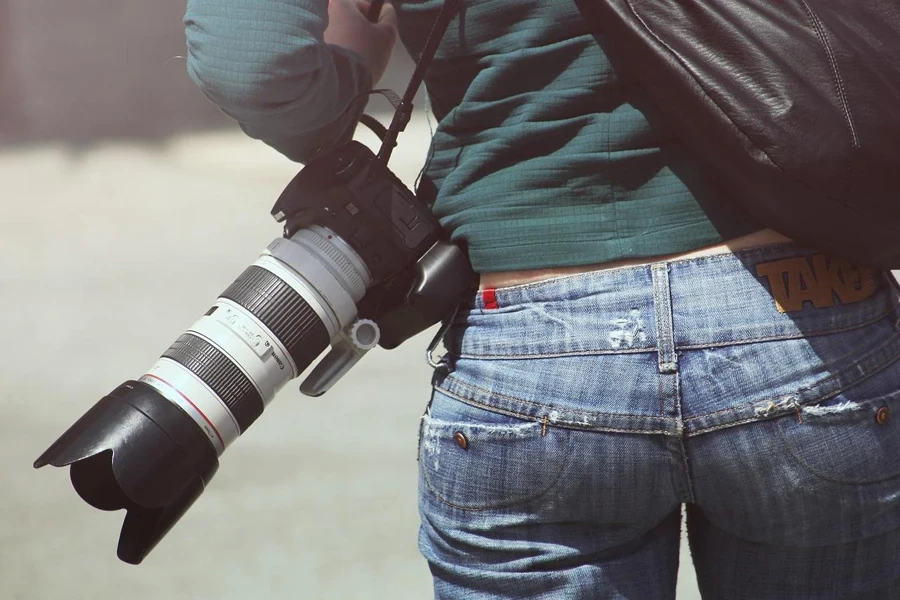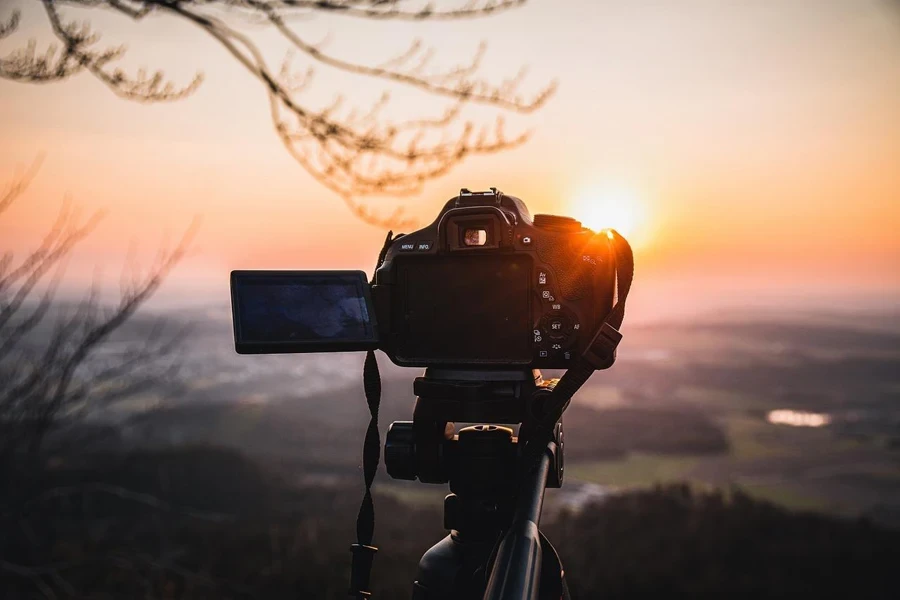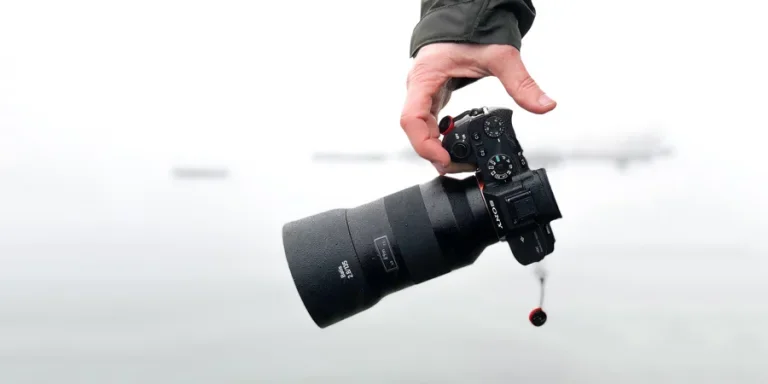In a time when visual content takes the stage, digital cameras capture top-notch images for personal and work purposes. As technology progresses swiftly, the digital camera industry keeps changing thanks to advancements in AI sensor tech and mirrorless designs. Knowing these industry trends is vital for professionals as it offers insights into the camera models and features influencing consumer choices.
In this article, we delve into the market trends and innovations in technology while showcasing the top-selling models dominating the scene in 2024. To stay ahead in a competitive environment, this analysis provides valuable insights into the future of digital photography.
Table of Contents
● Market overview: size, growth, and emerging trends
● Innovative AI and sensor tech transform photography
● Top models shaping the market: what’s leading the charge?
● Conclusion
Market overview: Size, growth, and emerging trends

Understanding market dynamics
The worldwide camera market was worth $8.56 billion in 2023. It is expected to hit $11.91 billion by 2031, with a growth rate of 4.21% annually over the forecast period. This expansion is driven by technological progress, such as improvements in sensor tech and AI-powered functions that improve the user experience. The rise in interest in photography as a hobby and career has led to a need for digital cameras that provide excellent image quality and easy-to-use features as consumers continuously look for models that meet these requirements.
Key players and market shares
The world of cameras is a battleground where big names such as Canon, Sony, and Nikon dominate the scene. Canon stands out with its selection of DSLRs and mirrorless cameras, while Sony has made waves with its cutting-edge mirrorless options like the A7 series. Nikon may trail slightly in market share, but it still holds its ground with a lineup of DSLRs and promising moves into the mirrorless realm. These companies work together to lead the market by innovating in camera technology to stay ahead of their competition.
Consumer preferences and market shifts
The shift in consumer choices is moving towards mirrorless cameras as people seek portability while still wanting top-notch image quality. Social media platforms have played a role in shaping purchasing decisions. Many individuals now prefer cameras that provide high-resolution video and seamless connectivity for sharing. Additionally, there is an increasing interest in AI-powered functions that streamline photography tasks and make advanced camera features more user-friendly for a range of users. The changing trends in the industry are influencing the market dynamics and pushing companies to develop new ideas to meet the changing demands of hobbyists and professional photographers.
Innovative AI and sensor tech transform photography

AI-powered photography
AI technology plays a role in today’s digital cameras by significantly improving the accuracy of autofocus and image enhancement features. Cameras with deep learning algorithms have revolutionized the ability to recognize subjects in time. This means the cameras can now effortlessly track eyes, facial features, and even moving animals precisely, no matter how fast or unpredictable their movements are. This level of performance is largely due to 759-point phase detection autofocus systems that cover 94% of the image frame, enabling sharp focus even when capturing sudden or erratic movements. Furthermore, scene recognition powered by AI can adjust basic settings and fine-unfine-tuning elements such as dynamic range and tone mapping for each frame. This results in images that boast contrast and color accuracy from the camera.
Advanced sensor technologies
Sensor technology has seen advancements in improving end digital cameras’ resolution and sensitivity aspects. The latest models now feature full-frame sensors with a capacity of 61 megapixels to capture intricate details in images. These sensors are equipped with gapless on-chip lenses and copper wiring to boost the efficiency of gathering light – a key factor for preserving image quality when shooting at high ISO settings. As a result of these enhancements, photographers can now push the boundaries further with an ISO sensitivity of up to ISO 102,400. This enables them to take photos even in low light conditions with minimal interference from noise. Furthermore, with dual gain architecture, the latest sensor technology enhances the range to capture details in bright and dark areas, which is crucial for scenes with sharp contrasts.

Mirrorless camera evolution
The move towards mirrorless camera systems has been fueled by advancements in electronic viewfinders (EVFs) boasting resolutions surpassing 5.76 million dots that offer a precise preview of exposure levels, color accuracy, and focus compared to conventional optical viewfinders. The newest camera models have stacked CMOS sensors that facilitate rapid data readout speeds to minimize rolling shutter distortions in paced shooting scenarios. This innovative technology enables shooting at speeds of up to 30 frames per second while maintaining autofocus and auto-exposure tracking capabilities. Moreover, incorporating in-body image stabilization (IBIS) technology that provides up to 8 stops of stabilization makes it possible to capture shots in situations where a tripod would normally be necessary. This feature enhances the versatility of these cameras for both photography and videography purposes.
Top models shaping the market: What’s leading the charge?

Sony A7 IV: A hybrid powerhouse
The Sony A7 IV stands out as a choice in the full-frame mirrorless camera segment due to its versatility in capturing photos and videos effectively. It has a 33MP Exmor R CMOS sensor that offers detail and dynamic range capabilities. It is powered by the BIONZ XR image processor for 10fps shooting and a sophisticated 759-point phase detection autofocus system that ensures quick and precise subject tracking across a significant portion of the frame. The A71V is also great for video as it can record in 4k at 60 frames per second and provides high-quality color sampling of 10-bit 4-to-3 ratios for professionals looking for results. This makes it a top choice for photographers who shoot photos and videos well.
Canon EOS R5: The 8K video leader
Canon’s EOS R6 sets a standard in high-resolution photography and revolutionary video features, and it is a leader in camera technology. The Dual Pixel CMOS AF II technology in the camera guarantees dependable autofocus for both photos and videos; additionally, the in-body image stabilization (IBIS) provides up to 8 stops of correction for handheld shooting in various settings. Professional videographers and photographers favor the EOS R5’s top-notch image quality and advanced features.
Nikon Z9: The speed king
The Nikon Z10 stands out as a top-tier camera model that raises the bar for speed and performance in the mirrorless camera category. It comes with a 45MP stacked CMOS sensor paired with an 8-image processor, enabling it to achieve rapid continuous shooting speeds of up to 30 frames per second in JPEG and 20 frames per second in RAW while maintaining full autofocus and exposure tracking capabilities. The Z10s sophisticated 493-point phase detection autofocus system is equipped with cutting-edge subject recognition algorithms that excel in capturing action-packed sports and wildlife moments. Furthermore, the camera allows for capturing videos in 8k resolution at 30 frames per second and 4k resolution at 120 frames per second, making it a versatile option for professionals requiring high-quality images and impressive video features.
Fujifilm X-T5: APS-C excellence
The Fujifilm X T5 stands out among APS-C mirrorless cameras for its blend of performance and portability qualities that users appreciate. Its 40MP X trans-CMOS 5 HR sensor captures high-quality images with vibrant colors. Furthermore, the X Processor 5 boosts speed capabilities for performance. It enables continuous shooting with 15fps continuous shooting with the mechanical shutter and up to 20fps with the electronic shutter. The X-T5 camera is great for shooting videos and can record in 6.2k resolution at 4k and 30p at 60 frames per second.
Conclusion

The world of cameras is constantly changing with the progress in AI technology and sensor advancements, along with the growing popularity of mirrorless cameras taking the lead role in this evolution phase. Key players such as the Sony A 74 Canon EOS R 6 and Nikon Z Nine are redefining standards with their top-notch performance capabilities that cater to the needs of photographers and videographers.
With the advancement of technology in the photography realm comes a wave of innovations that transform the market landscape by providing professionals and hobbyists with many resources to unleash their creativity to new heights. The trajectory of photography foresees expansion fueled by these state-of-the-art advancements that open doors to a realm of endless opportunities.





 Afrikaans
Afrikaans አማርኛ
አማርኛ العربية
العربية বাংলা
বাংলা Nederlands
Nederlands English
English Français
Français Deutsch
Deutsch हिन्दी
हिन्दी Bahasa Indonesia
Bahasa Indonesia Italiano
Italiano 日本語
日本語 한국어
한국어 Bahasa Melayu
Bahasa Melayu മലയാളം
മലയാളം پښتو
پښتو فارسی
فارسی Polski
Polski Português
Português Русский
Русский Español
Español Kiswahili
Kiswahili ไทย
ไทย Türkçe
Türkçe اردو
اردو Tiếng Việt
Tiếng Việt isiXhosa
isiXhosa Zulu
Zulu